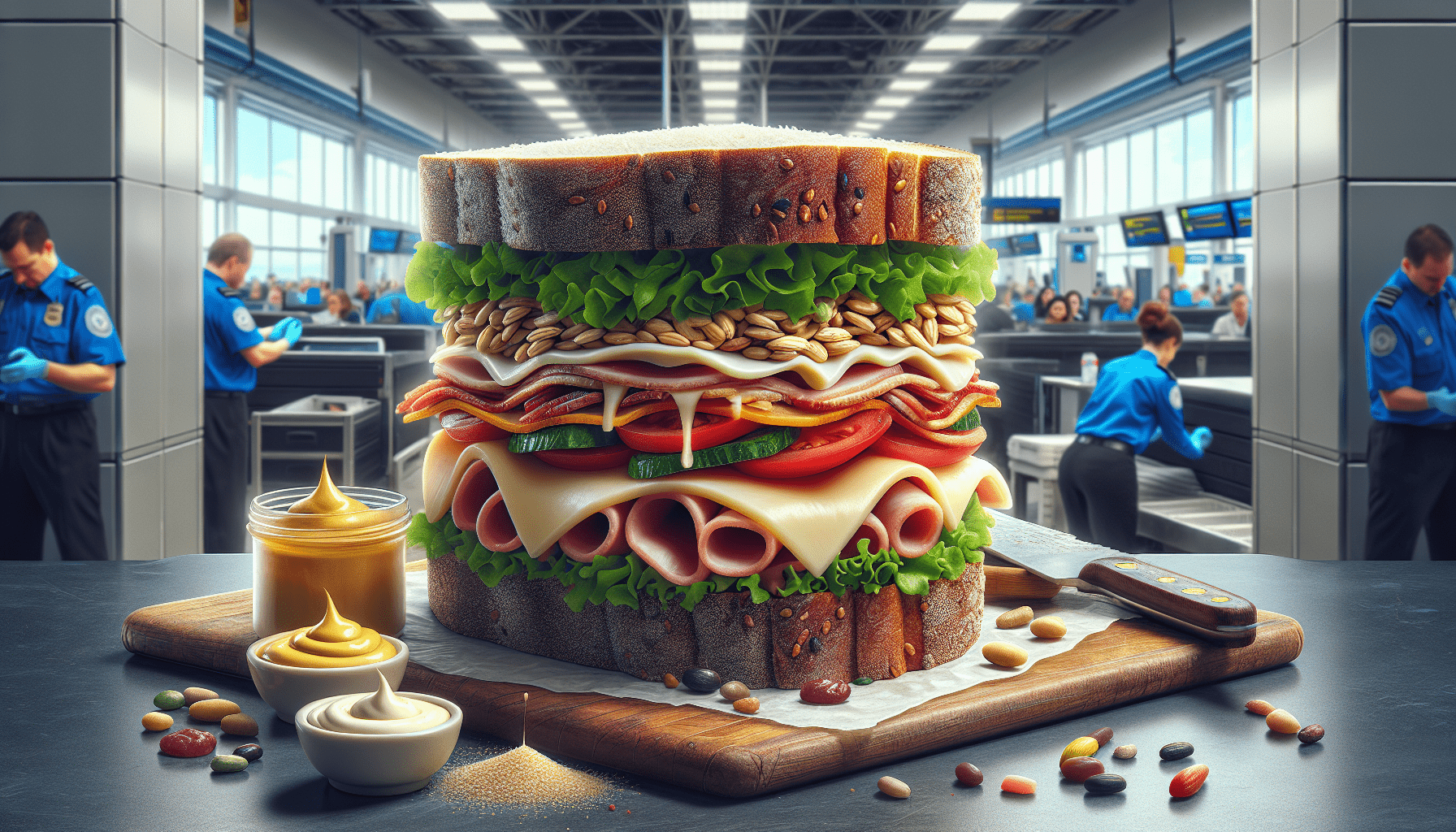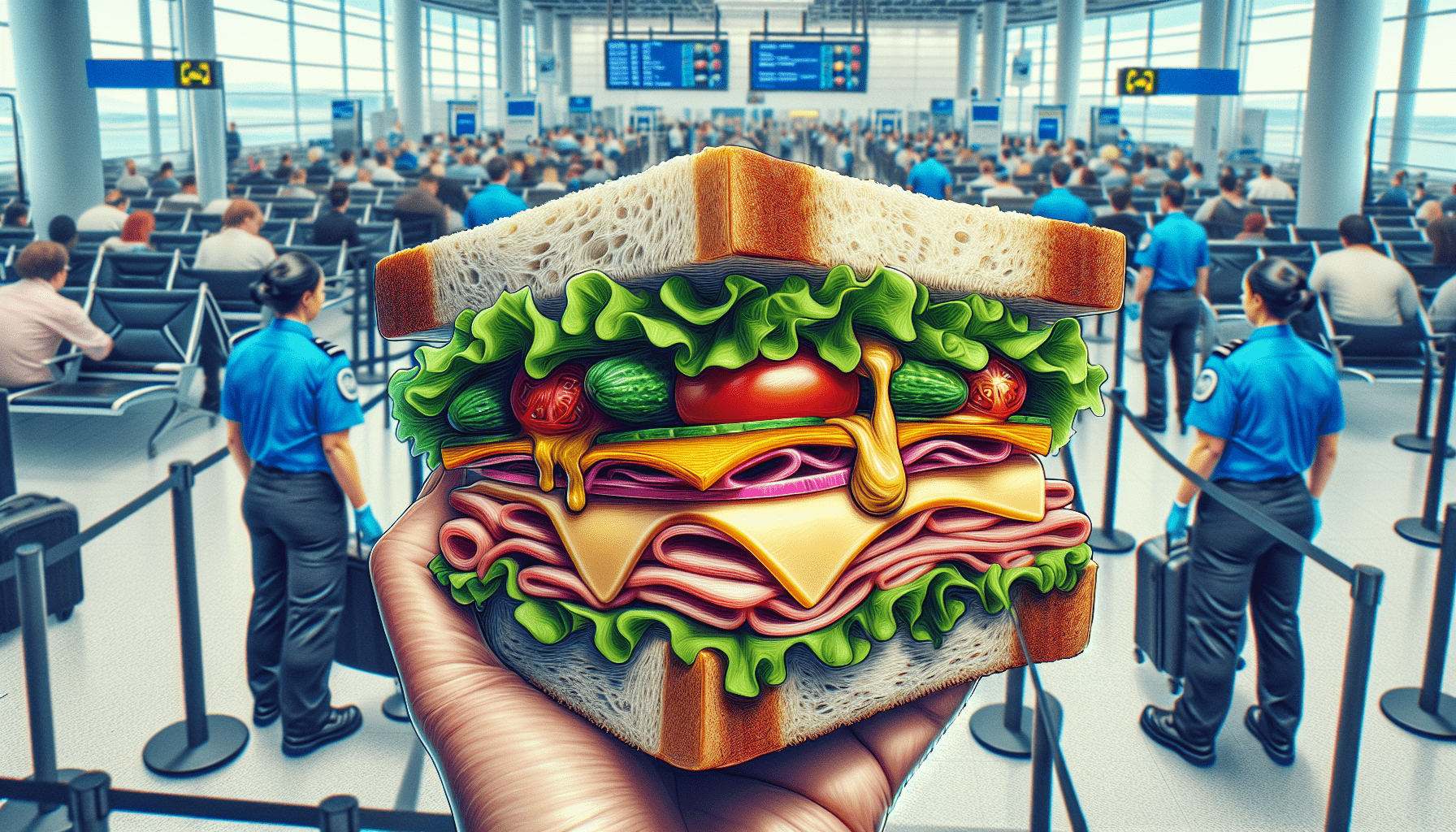Navigating airport security with your own packed snacks can be a real game-changer, especially for budget-conscious travelers. You might wonder if a sandwich loaded with savory liquid condiments like mayo or mustard is allowed through TSA. Good news! It is! As long as the condiments are securely inside the sandwich and not in separate containers, you’re good to go. Just remember that any spreadable or creamy items must adhere to the TSA’s 3-1-1 rule if you’re carrying them separately. And it’s not just sandwiches; a variety of foods like quiches, pasta salads, and even cooked steaks can make it through security, keeping your travel meals both delicious and economical. Can You Bring A Sandwich With Liquid Condiments On It Through TSA?
Have you ever wondered if you can bring your delicious homemade sandwich with all the fixings through TSA? Let’s face it, airport food can be ridiculously expensive, and bringing your own tasty snacks can be a real lifesaver for your wallet and your taste buds. But when it comes to sandwiches, especially those loaded with liquid condiments, you might be second-guessing whether they’ll make it past security. Don’t worry, though! We’re here to break down everything you need to know about what you can and can’t bring regarding those tasty sandwiches with liquid condiments.
Shop These Accessories for a Comfortable Trip
Understanding TSA Food Rules
When you’re packing snacks for your trip, it’s critical to understand the TSA’s guidelines on food. Yes, you can bring your food through TSA checkpoints, but there are specific rules, especially concerning liquids and gels.
The 3-1-1 Rule
The 3-1-1 rule is one of the cornerstones of TSA policies regarding liquids. It states that you can carry liquids in containers of 3.4 ounces (100 milliliters) or less, all fitting into a single one-quart-sized, clear, resealable bag. This rule often applies to items you might not think of as liquids, such as creams, pastes, and gels.
What Counts as a Liquid?
Understanding what counts as a liquid can be a bit confusing. The TSA considers items like spreads and creams — such as hummus, jam, cream cheese, and even some types of cheese — to be liquids. If these foods are in containers larger than 3.4 ounces, they won’t be allowed through the checkpoint unless they’re part of a sandwich.
Screened Separately
Foods, especially those in containers, might need additional screening. It’s a good idea to keep food items organized and easily accessible to simplify the process. Always inform the TSA agent if you’re carrying food, as this can prevent unnecessary delays and hassles.
Sandwiches and Liquid Condiments: The Ins and Outs
Bringing your favorite sandwich — packed with liquid condiments — through TSA involves understanding some nuances.
Can It Pass?
A sandwich with liquid condiments is generally permissible. The key is to ensure that the condiments are spread within the sandwich rather than stored separately in containers exceeding the 3.4-ounce limit.
For instance, a turkey sandwich with a layer of mayo and mustard is typically fine. Similarly, a PB&J featuring a smooth blend of peanut butter and jelly within the bread isn’t a problem. However, beware of bringing extra dips or sauces if they surpass this limit.
What About Extras?
If you like carrying extra packets of condiments or sauces, ensure they’re within the allowed volume. Condiment packets are typically small and fall well within the 3.4-ounce rule. Don’t pack jars or bottles of sauces unless you check them in with your luggage.
Here’s a quick reference for a few common sandwich condiments:
| Condiment | Status by TSA |
|---|---|
| Mayonnaise | Allowed inside the sandwich |
| Ketchup | Allowed inside the sandwich |
| Mustard | Allowed inside the sandwich |
| Cream Cheese | Allowed inside the sandwich |
| Hummus | Must follow 3-1-1 rule |
| Butter | Allowed if part of the sandwich |
| Jam/Jelly | Allowed inside the sandwich |
| Cheese (spreadable) | Must follow 3-1-1 rule |

Shop These Accessories for a Comfortable Trip
Other TSA-Approved Foods for Travel
What if you want more variety than just sandwiches? There are plenty of other foods you can pack that are TSA-friendly, and knowing them can help you travel better prepared.
Solid Foods
Most solid foods are perfectly permissible to carry through TSA checkpoints. This includes:
- Fruits: Apples, bananas, grapes, and berries.
- Vegetables: Carrot sticks, celery sticks, cucumber slices.
- Bread and Pastry: Bagels, muffins, donuts.
- Meats and Cheeses: Pre-cooked meats, hard cheeses like cheddar, gouda.
Smart Packing Tips
When packing solid foods, consider these tips to ensure a smooth process:
- Pre-Cut and Portion: Foods that are pre-cut and divided into portion sizes can make the screening process faster and more efficient.
- Non-Leak Containers: Use containers that don’t leak to avoid any mess.
- Separate Bags: Consider dividing your food into separate bags to make it easier to show TSA agents what you’re carrying.
Utensils and Accessories
Packing utensils and other accessories is essential for a comfy trip, but you need to be mindful of TSA rules here as well.
Permissible Cutlery
Plastic cutlery is your best bet when traveling through TSA checks. You can bring plastic spoons, forks, and knives without any hassle. Blunt-edged accessories like butter knives are also allowed.
Prohibited Items
Sharp and serrated knives, forks, and any other dangerous tools are strictly prohibited. These items should be packed in checked luggage if essential for your travel needs.

Foods Best Left at Home
While many foods make the cut, some are best left at home due to practical reasons and TSA guidelines.
Smelly Foods
To avoid disturbing fellow travelers, leave behind foods with strong odors, like:
- Fish: Tuna, salmon, or other fish-based dishes.
- Garlic-heavy foods: Anything overly potent with garlic.
Messy Foods
Foods that can create a mess or stain are best avoided:
- Saucy dishes: Dishes with thin gravies or sauces.
- Casseroles: Especially those that may leak.
Restricted by TSA
- Packaged Liquids and Gels: Anything exceeding the 3.4 oz rule in liquid form, including soups and broths.
Planning Your Travel Menu
Planning your snacks can make your travel smoother and more enjoyable. Here are some tips to plan better:
Balanced Choices
A balanced travel menu can keep you full and satisfied. Aim to include:
| Food Type | Examples |
|---|---|
| Protein | Eggs, chicken strips, nuts |
| Carbohydrates | Bread, crackers |
| Fruits | Apple slices, berries |
| Vegetables | Carrot sticks, snap peas |
| Dairy | Cheese slices, yogurt |
Hydration and Drinks
While you can’t bring liquids through security, empty bottles are fine. Fill up at water fountains once past the checkpoint, and consider packing tea or coffee bags to pair with hot water.
Final Tips for Traveling with Food
Traveling with food requires a bit of extra thought. Here’s a handy summary of tips:
- Stay Organized: Keep food items accessible in your carry-on.
- Communicate with TSA: Let agents know you’re carrying food.
- Pack Smart: Use non-leak containers and avoid messy foods.
- Follow 3-1-1 Rule: Ensure all condiments and liquids comply.
- Consider Fellow Travelers: Avoid strong-smelling foods.
Conclusion
Bringing your own delicious sandwich with liquid condiments through TSA is indeed possible, and a bit of understanding of the rules can make your journey much more pleasant. Just remember the 3-1-1 rule, pack wisely, and be considerate of your fellow travelers. By doing so, you can enjoy your homemade food in the airport without breaking the bank or the rules.
Happy travels and safe sandwich smuggling!
Shop These Accessories for a Comfortable Trip






